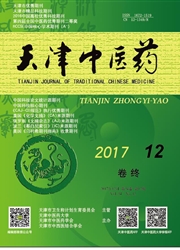

 中文摘要:
中文摘要:
[目的]分析中医古籍文献中胸痹心痛的证治规律及中药用药特点。[方法]运用文献学方法搜集并整理从先秦时期至清末关于胸痹心痛的各类医学古籍文献,选取关键数据建立数据库,应用统计学软件对中药部分数据进行频数统计及聚类分析。[结果]相关数据结果分析发现从先秦时期到清末历代医家治疗胸痹用药以温里药应用居于首位,说明温里药为胸痹心痛方中主要药类;其次化痰药、理气药、补虚药等也为治疗胸痹心痛方中的常用药类,常协同使用。[结论]本研究结果之用药特征与张仲景关于胸痹心痛之“阳微阴弦”病机表现出高度一致。
 英文摘要:
英文摘要:
[Objective] To analyze the law of syndrome differentiation and treatment, drug-using characteristics of chest obstruction with heart pain in ancient literature. [Methods] All the kind of ancient literatures about chest obstruction with heart pain form Qin dynasty to the terminal Qing were collected and summarized with literature method. A database of the key materials was established. Using statistical software the frequency and clustering analysis of the herbs were performed. [Results] Based on the related results in the study it was found that Wenli (warming the inside portion) medicines were the mostly used by the physician from prior Qin period to the terminal Qing dynasty in treating chest obstruction with heart pain. It confirmed that the medicine with warming the interior was the most important kind of herbs in treating Chest obstruction. Secondarily, the medicine of resolving phlegm, regulating Qi and benefiting deficiency were also the commonly used in treating chest obstruction with heart pain. They were usually used together. [Conclusion] The result of this study shows that the drug-using characteristics is highly identical with the pathogenesis appearance of "weak pulse at Yang and stringly pulse at Yin" (Yang Wei Yin Xuan) about chest obstruction with heart pain described by ZHANG Zhong-jing.
 同期刊论文项目
同期刊论文项目
 同项目期刊论文
同项目期刊论文
 期刊信息
期刊信息
